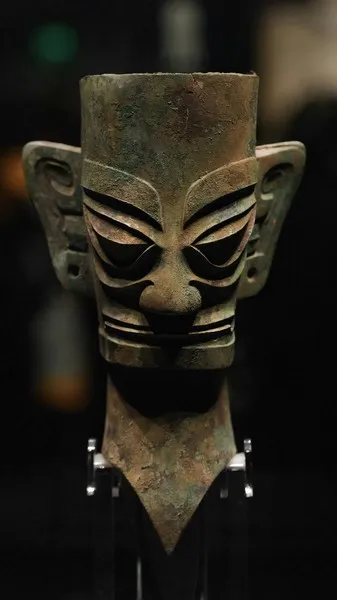Table of Contents
- Introduction
- The Origins of Totemism as a Concept
- Totemism and Social Structure
- Totemism and Religion
- Totemism and Symbolism
- Totemism in Contemporary Contexts
- Critiques and Theoretical Debates
- Conclusion
Introduction
Totemism is one of the most enduring and complex concepts in the history of sociological and anthropological thought. It refers to a system of belief in which humans are said to have kinship or a mystical relationship with a spirit-being, such as an animal or plant, called a “totem.” These totems often serve as emblems for clans or groups, shaping collective identity, social organization, cosmological understanding, and ritual practices. While frequently associated with so-called “primitive” societies, totemism offers profound insights into the symbolic foundations of social life, religion, morality, and collective consciousness. As a sociological phenomenon, totemism not only illuminates the dynamics of traditional kinship-based societies but also continues to inform our understanding of symbolism, classification, and group identity in modernity. This article explores the sociological dimensions of totemism, drawing upon classical theory, modern reinterpretations, and comparative analyses to provide a comprehensive and academically rigorous overview suitable for undergraduate students of sociology.
The Origins of Totemism as a Concept
The concept of totemism emerged from early ethnographic observations of Indigenous cultures in North America and Australia. The term itself is derived from the Ojibwa word odoodem, meaning “his kinship group.” European explorers and missionaries noted that various Indigenous groups appeared to identify with specific animals, plants, or natural phenomena, treating these entities with reverence and associating them with elaborate myths, taboos, and ceremonial practices. These early observations laid the groundwork for theoretical inquiries into the nature and function of totemism.
Early Theoretical Contributions
Several foundational thinkers in sociology and anthropology endeavored to understand the underlying logic and social role of totemism:
- James George Frazer, in The Golden Bough, conceptualized totemism as an early evolutionary stage in the development of religion. For Frazer, totemism was a rudimentary attempt by humans to explain the natural world and assert control over it through sympathetic magic and religious observance.
- Émile Durkheim, in The Elementary Forms of Religious Life, advanced a more sociologically grounded interpretation. He argued that totemism was not a primitive superstition but rather the most elementary form of religion. Durkheim saw the totem as the symbolic embodiment of the clan itself; to worship the totem, therefore, was to symbolically affirm and worship the moral and social unity of the group.
- Claude Lévi-Strauss, a leading figure in structuralist anthropology, offered a different perspective. He suggested that totemic systems reflect the binary oppositions inherent in human thought, such as nature/culture, animal/human, and male/female. For Lévi-Strauss, totemism was not about supernatural beliefs but about the human need to structure and order social life through symbolic classifications.
Totemism and Social Structure
Totemism plays a foundational role in shaping the social organization of the societies that practice it. It informs kinship relations, delineates social boundaries, regulates marriage practices, and provides a moral framework for communal life.
Clan and Kinship
In totemic societies, individuals are typically born into clans or moieties—kinship groups that are associated with particular totems. These totemic affiliations are not merely symbolic; they structure the most basic aspects of social life:
- Clans often trace their lineage back to a mythical ancestor, usually the totemic animal or plant, and this mythical descent provides the ideological basis for social cohesion.
- Totemic identity is ascribed and usually unchangeable, passed down through the maternal or paternal line depending on the kinship system.
- These identities create clearly defined social categories and boundaries, regulating whom one can marry, whom one must avoid, and whom one owes ritual obligations.
- The requirement of exogamy—marrying outside one’s clan—prevents in-group reproduction and promotes inter-clan alliances, reinforcing social integration and cohesion.
Regulation of Behavior and Moral Norms
Totemism also serves as a mechanism for regulating individual and collective behavior by embedding moral norms within symbolic and religious frameworks:
- Members of a clan are typically forbidden from eating, killing, or harming their totemic animal, reinforcing a deep sense of respect and reverence for nature.
- Taboos and prohibitions surrounding the totem function as moral injunctions, with violations resulting in both spiritual and social consequences.
- Rituals, storytelling, and oral traditions serve to reinforce the sanctity of the totem and the moral obligations it imposes.
- The totem thus becomes a vehicle through which communal norms are internalized, embodied, and transmitted across generations.
Totemism and Religion
Totemism is fundamentally religious in nature, offering a lens through which societies define the sacred, experience the divine, and construct cosmological order.
The Sacred and the Profane
Durkheim’s seminal contribution was to identify the distinction between the sacred and the profane as the core of religious life. In totemic societies, this distinction is clearly marked:
- The totem is imbued with sacred power and set apart from ordinary, profane existence.
- Through communal rituals, feasts, and ceremonies, the sacredness of the totem is celebrated, renewed, and reconstituted.
- These collective rituals generate what Durkheim called “collective effervescence,” a state of heightened emotional unity and solidarity that reinforces the moral fabric of society.
Totemism as the Origin of Religious Life
For Durkheim, totemism represented the origin of all religious belief systems because it revealed the social roots of religious experience:
- Religious symbols, he argued, are collective representations that express and reinforce group consciousness.
- The totem becomes a mirror in which society sees and worships itself.
- Through the veneration of the totem, individuals come to see themselves as part of something larger, bound by shared values, myths, and moral obligations.
- Religion, in this view, is not about supernatural entities but about the collective affirmation of social life.
Totemism and Symbolism
Get the full article AD FREE. Join now for full access to all premium articles.
View Plans & Subscribe Already a member? Log in.





